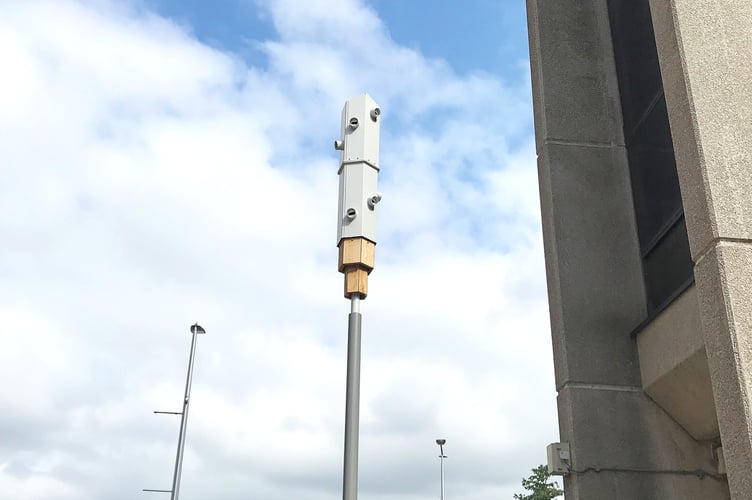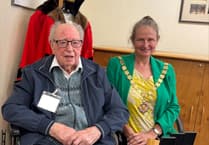SWIFTS are a familiar and awesome sight in our summer skies, using their speed and agility to catch flying insects on the wing. They are the fastest birds in level flight, with a top speed of 69mph.
Although they only spend three or four months with us each summer, they bring spectacular aerial action and excitement to our urban lives while they are here.
They come here to produce offspring, before returning to spend the colder months in Africa. They migrate 3,400 miles, twice a year, stopping off to refuel in places like Portugal and France.
Swifts spend more time airborne than any other bird, sometimes only landing at their nests. Swifts pair for life, returning to the same site each year for a little nest renovation before laying and incubating their eggs.
Although it’s a couple of months before they are due to return, several organisations have flagged concerns for swifts, which have suffered huge declines.

Their numbers seen in the UK fell by half between 1995 and 2015, which means they are “red listed”. This is the highest conservation priority, with species on this list needing urgent action. A lack of suitable nest sites is seen as a major problem.
They like to live in older houses and churches, squeezing through tiny gaps to nest inside roofs. But as old buildings are renovated and gaps in soffits are closed, nest sites are fast disappearing.
Organisations including Swift Conservation, Action for Swifts and The Royal Society for the Protection of Birds (RSPB) are encouraging builders and renovators of homes and other buildings to incorporate “swift boxes” in walls. These are specially designed to provide an ideal nesting site for swifts.
Action For Swifts includes several options for providing swift nesting sites on its website – www.actionforswifts.blogspot.com – including boxes that can be incorporated within the building’s brickwork, under the eaves. It also shows several designs of wooden swift nest boxes which DIY-ers can make and mount on homes and other buildings.
Or if you’d like a ready-made wooden swift nesting box to mount on your home, Swift Conservation sells several types on www.swift-conservation.org.
Another solution is to provide “swift posts”, providing a number of swift boxes. Woking Borough Council has provided a “swift and bat” post in Gloucester Square near the council offices in the town centre.
Action For Swifts is demanding much more help for swifts. It wants swift bricks to be required in all new housing. The Government says it welcomes any action by individual developers who wish to provide swift bricks, but it will “not be legislating to compel local authorities or developers to include particular forms of green infrastructure in every development”.
However, it adds: “As with all our policies, this area continues to evolve and develop, balancing the very laudable different priorities of supporting people into home ownership with protecting and enhancing our natural environment – both of which we want to achieve.”
A petition has been posted on the UK Parliament Petitions site to make swift bricks compulsory in new housing to help “red-listed” birds, specifically swifts. As we go to print it has attracted well over 63,000 signatures, but it needs 100,000 by 30 April to trigger a parliamentary debate.
You can read and sign the petition online at https://petition.parliament.uk/petitions/626737.
Don’t forget to look up to see these beautiful birds when they arrive from May onwards.
They are most often seen flying high above towns and villages, as they rely on buildings for nesting.
If they continue their sad decline – largely at our hands – future generations may not be able to enjoy them.


.jpeg?width=209&height=140&crop=209:145,smart&quality=75)

Comments
This article has no comments yet. Be the first to leave a comment.